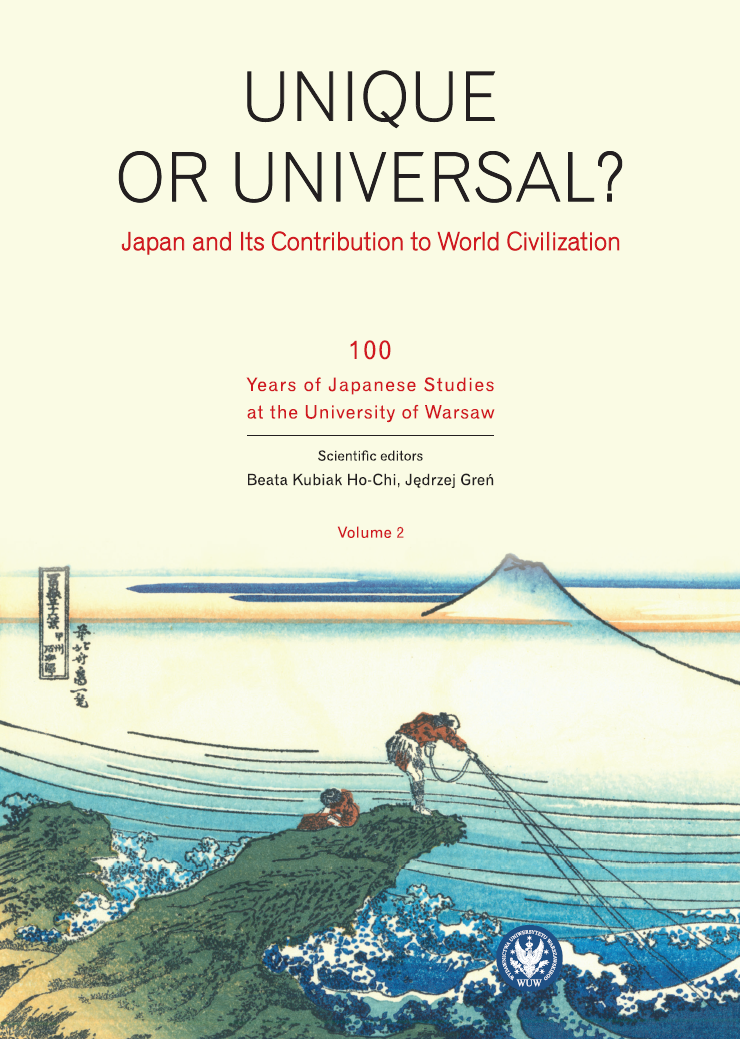The New Nō Drama (Shinsakunō) for the Appeasement of Spirits and Process of Reconciliation
The New Nō Drama (Shinsakunō) for the Appeasement of Spirits and Process of Reconciliation
Author(s): Jadwiga Rodowicz-Czechowska
Subject(s): Cultural history, Studies of Literature, Other Language Literature, Philology
Published by: Wydawnictwa Uniwersytetu Warszawskiego
Keywords: nō; shinsakunō; new nō; appeasement; reconciliation; The Sea Current of Deer; Dōmoto Masaki; Udaka Michishige; Tada Tomio; Hiroshima; Nagasaki; Ishimure Michiko; Janine Beichman; Allen Marett
Summary/Abstract: Studies of nō texts very rarely focus on plays written contemporaneously. Even though more than 400 newly created nō texts (shinsakunō in Japanese) have appeared, one can hardly find any information about them. By looking through the lists published by Hōsei Daigaku Nōgaku Kenkyūjo and browsing available data on the internet, as well as reading texts written by foreign authors (Cheong, Marlatt, Beichman), one can see how strongly the format of nō is related to processes of appeasement and reconciliation with a difficult past. The term shinsakunō is usually used for texts written since the beginning of the Meiji era until now. This term is not used for plays written in languages other than Japanese by non-Japanese authors, even if they are created in the exact same nō format. Yet it is precisely this format that allows one to deal with trauma, both individual and social, in a poetical way on stage. In Western theater, spirits appear on stage almost exclusively in works of fantasy. But in the nō format, they can meet the living thanks to this longestablished convention. In this respect, the uniqueness of nō forms serve the universal human need for appeasement of a bad or painful past.
Book: Unique or universal. Japan and its Contribution to World Civilization. Volume 2
- Page Range: 147-163
- Page Count: 17
- Publication Year: 2023
- Language: English
- Content File-PDF

